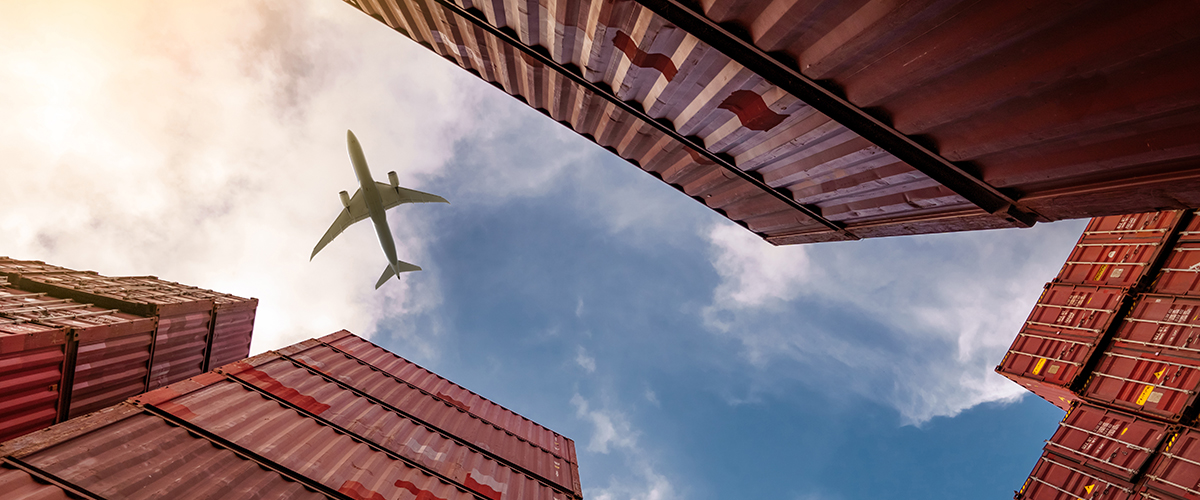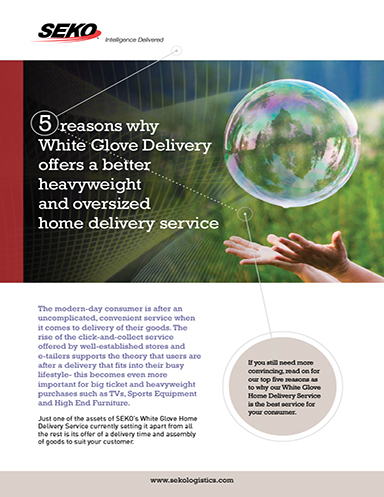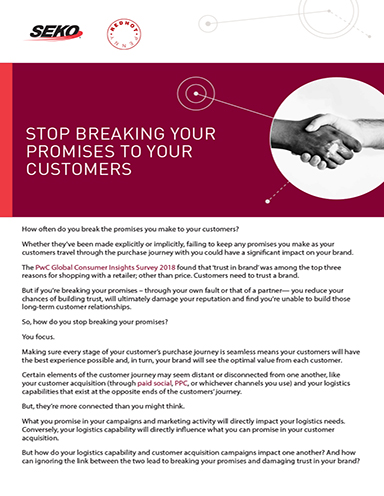U.S. Port Congestion Has Some Retailers Forgoing Ocean Freight in favor of Air Freight

Companies such as Peloton are facing a costly logistical nightmare as record congestion at ports around the world cause delays.
Global shipping data from MarineTraffic showed a ship with 197 containers of Peloton bikes and merchandise circled at anchor just outside the Port of Los Angeles between Dec. 22 and Jan. 2., when it was allowed to dock — after Christmas.
Import trade data analyst William George:
“The ship, and Peloton’s expected supply time, lost 12 days due to this while their product was nearly within swimming distance of shore. This is a crazy illustration of the problem Peloton and other U.S. importers are struggling with.”
The combination of a record number of containers arriving at the Port of Los Angeles — the busiest container port in the Western Hemisphere due to its proximity to Asia — and Covid-19 is slowing down imports to the U.S.
Around 800 of the International Longshore and Warehouse Union’s 15,000 members have been out of work due to Covid, according to data from the union.
The congestion at ports has some companies forgoing maritime shipping in favor of airfreight to get popular or seasonal items on store shelves faster.
Air rates are more expensive than shipping via ocean freight, but they’ve been dropping in recent months, according to online international freight marketplace Freightos.
Air Cargo Increases by 400%
Freightos Chief Marketing Officer Eytan Buchman:
“While air cargo had its period of volatility in the first few months of Covid, tracking a 400% increase between February and April 2020, ocean freight has become a bottleneck in global supply chains, making air cargo a more viable option in some cases.”
Some of the congestion at U.S. ports is expected to ease as more longshore workers get vaccinated against the coronavirus. Just 5% of longshore workers have received vaccinations so far, Port of Los Angeles executive director Gene Seroka said. He added that the port is lobbying “all levels of government” for more vaccines to help ease congestion.
Peloton, which declined to comment for this article, referred CNBC to the company’s quarterly shareholder letter released last month. The letter said profit margins during the last three months of the year — which include the critical holiday shopping season — were squeezed by $100 million due to higher shipping costs.
“The global increase in shipping traffic has added significant delays to all sorts of goods coming into US ports, including Peloton products. These unpredictable delays have resulted in painful delivery reschedules for many people as Peloton Bikes, Treads, and accessories have been held at Port for upwards of five times longer than usual.”
Peloton’s December shipment struggle is just one example of the variety of goods getting held up at U.S. ports.
Waiting to dock
Thirty container vessels were at anchor outside the ports of Los Angeles and Long Beach as of Monday, according to MarineTraffic data. More than 30 container ships are expected to arrive in Los Angeles by the end of March, and at least 27 ships are slated to dock in Long Beach in that time.
Among the anchored vessels waiting to unload at Los Angeles is the APL Charleston, which carried the delayed Peloton deliveries in December. The ship arrived again fully loaded with Chinese exports on Feb.18.
Capt. Adil Ashiq, executive of MarineTraffic’s U.S. western region, said the delays in December were not unusual.
“It is a reality many vessels, supply chain and logistics providers are currently facing at the Port of Los Angeles and Port of Long Beach,” Ashiq said in an interview.
He added that the median time a container ship spent anchored outside the dock last week was just over 7.5 days before it could head inland.
Ashiq continues:
“Now that the APL Charleston is back at anchorage, she may face similar circumstances as she did from her previous port visit in December, but of course this is shipping so anything can happen.”
The bottleneck at ports has added costs to maritime shipping that make airfreight, which is normally significantly more costly, look like a relative bargain, especially when factoring in the time saved. Prices on air shipping have also dropped dramatically in recent months.
The price of a 250-kilogram air shipment traveling from China to the U.S. has dropped from about 60% of the cost of a full container to around 36%, Ashiq said.
“In other words, for the right type of cargo, and certainly the right value, air is absolutely becoming a more enticing option, with both capacity and far faster transit times,” Freightos’ Buchman said.
Airfreight Versus Ocean Freight
The time saved in transporting a product justifies the cost for some clients who are trying to meet consumer demand, SEKO Logistics Chief Growth Officer Brian Bourke said.
Bourke:
“If you want to ship a hot tub via ocean from Shanghai to New York, that will cost you around $1,000 for the transportation for a lighter hot tub, but it will take a minimum of 35 to 45 days.”
He added that doesn’t include an additional seven to 14 days if you need to book in advance. Airfreight costs around $2,000 to $3,000 to ship, depending on the weight, he said.
Bourke continues:
“But it will only take you three to four days to get your hot tub. So, paying two to three times will save you four to seven weeks right now. Ultimately the math makes sense for certain shippers right now.”
Canyon Bicycles USA Transportation Manager Kim Peterson said the company is shipping most of its inventory via water, but added that its most popular bikes are being shipped by air to meet a demand surge.
Peterson said:
“Air is faster, and we need to meet the demand of our customers. While I could pay an additional $1,000 to $2,000 to get my product in (an ocean) container at the head of the line in China, it doesn’t matter because the cargo then sits in the LA congestion.”
60 to 75 days Ocean Shipping
Shipping by ocean took 20 to 30 days before the pandemic, Peterson said. Now it’s about 60 to 75 days while airfreight takes three to five days.
“It’s a huge difference,” Peterson added. “We have a backorder in Asia right now,” he said. “We can’t wait. It would have an impact on sales.”
Shawn Richard, SEKO’s vice president of global airfreight, told CNBC he doesn’t expect the high congestion levels to abate anytime soon.
“We are regularly flying 65-inch televisions in from China to the U.S., we saw a 40% increase in airfreight in December. Large items like hot tubs were also being transported. Our ocean freight teams are now selling airfreight.”
Richard added that large home-recreation items like ping pong tables and exercise equipment such as treadmills would typically be shipped by ocean because of the cost. Now they are moving by air because of a demand spike as the pandemic has people locked indoors, looking for ways to stay fit and entertain outside.
Richard continues:
“Barbecue equipment and associated goods such as lawn/patio furniture, inflatable pools, filter equipment, and everything that could be used to improve the shelter at home experience in lieu of family vacations are now moving by air.”
The lack of reliability has stretched the functionality of logistics and supply chains to their limits.
Matt Castle, vice president of airfreight products and services at C.H. Robinson:
“We see those industries who need expedited shipping being pushed into the air versus the ‘hurry up and wait’ on the ocean front.”
Recreation vehicles and parts that used to ship by ocean have shifted to airfreight, he said. “One of the things I never thought we would see being moved by air was vacuum cleaners. It’s a hot item now with so many people at home.”
Seasonal Deliveries
Castle noted that the move to air shipping was sparked by a combination of factors: companies with a narrow seasonal window for selling products and production-based industries looking to restore some sort of rhythm and catch-up on inventory.
Castle continues:
“The ocean congestion is compounding that need to meet orders and driving demand for airfreight.”
Stephen Svajian, CEO and co-founder of Anova Culinary — which sells its precision countertop combo-ovens and cookers to Costco, Target and Amazon — said they are increasing their airfreight orders given the surge in demand fueled by the “restaurant experience at home.”
Svajian continues:
“We decide on what products to air freight based on the retail set date and consumer expectations. We don’t want to be out of stock and not fulfill orders. There is more pressure to use air this year because of delays on the ocean.”
Companies outside the U.S. are also shipping more products through the air. Castle said he is also seeing companies in Europe making the switch. “That market is very strong. There is a lack of container capacity everywhere.”
Agriculture Exports
Air is also becoming an option for U.S. exporters struggling to transport their products overseas. Carriers make far less shipping exports from the U.S. to China — $744 per container versus $4,922 for Chinese exports bound for the U.S. The time and money saved by not having to load, unload and clean empty containers makes up for the lost money on the route back to Asia.
It’s also costing U.S. farmers who are struggling to ship their commodities overseas. Their access to international markets “is being severely undermined by the unprecedented dysfunction and cost of ocean transportation services,” Agriculture Transportation Coalition executive director Peter Friedman said.
SEKO’s Richard added that spices and perishable commodities like lobster started shipping by air to China as early as October.
However, there doesn’t seem to be a quick fix to unclog U.S. ports, which leaves companies like Canyon with few options.
Peterson adds:
“In the cycling world, when the sun comes out, people want to take a ride on a bike. Demand is still high. It’s quite obvious, we will have to continue and do more air.”
Related White Papers
5 Reasons Why White Glove Delivery Offers a Better Heavyweight and Oversized Home Delivery Service
The modern-day consumer is after an uncomplicated, convenient service when it comes to delivery of their goods. The rise of the click-and-collect service offered by well-established stores and e-tailers supports the theory that users are after a delivery that fits into their busy lifestyle- this becomes even more important for big-ticket and heavyweight purchases such as TVs, Sports Equipment and High-End Furniture. Download Now!
Don't Damage Your Retail Brand by Breaking Promises with Your Customers
Whether they've been made explicitly or implicitly, failing to keep any promises you make as your customers travel through the purchase journey with you could have a significant impact on your brand. Download Now!
Ecommerce has entered the mainstream in force, with the Global ecommerce market now standing at over $1 trillion - so retailers who ignore this growing market segment do so at their own risk. But how does a traditional ‘bricks and mortar’ business move into the internet space? Download Now!
Article Topics
SEKO Logistics News & Resources
SEKO Logistics take a deep dive into supply chain complexities SEKO Logistics’ executives address Peak Season potential amid economic backdrop SEKO Logistics announces acquisition of Pixior LLC SEKO’s Bourke assesses key global logistics trends and themes Shutdowns in China leave things open-ended for supply chain stakeholders SEKO’s Gagne provides insights on 2022 supply chain and logistics landscape ShipStation welcomes SEKO’s LTL capabilities for its partner network More SEKO LogisticsLatest in Transportation
Ask an Expert: How Shippers Can Prep for Hurricane Season UPS Struggles in First Quarter With Steep Earnings Decline FedEx Announces Plans to Shut Down Four Facilities The Two Most Important Factors in Last-Mile Delivery Most Companies Unprepared For Supply Chain Emergency Baltimore Bridge Collapse: Impact on Freight Navigating Amazon Logistics’ Growth Shakes Up Shipping Industry in 2023 More Transportation
















